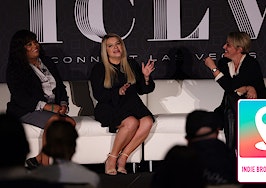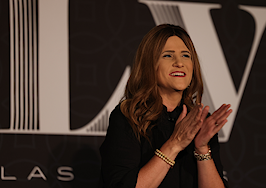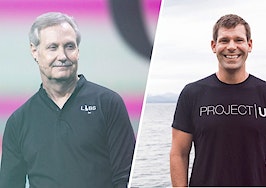When the real estate industry comes together to share ideas and connect, magic happens. The next Inman Connect is right around the corner on January 25-27 at the Hilton Midtown in NYC. Reserve your spot now to gain insights, strategies, and tactics to keep your business growing and make 2022 your best year ever.
Like people, teams come in all different shapes and sizes. During a Teams Track panel at Inman Connect Las Vegas on Thursday, Tommy Choi of the Weinberg Choi Residential Team at Keller Williams spoke with Brian Fairweather of the Spears Group at Scenic Sotheby’s International Realty and Matt Patulski of the Heyl Group at Keller Williams about how they decided to build out their teams and what they’ve learned through the years.

Brian Fairweather
Fairweather has a team of eight agents and operates on a repeatable and scalable business model. Patulski, on the other hand, has about 110 agents on his team and runs on a hub and spoke model, where a centralized hub supports agents across five different cities throughout the U.S.
When Fairweather joined his team, however, there were only four agents, and the company was only producing at about half the level they do today. And Choi wondered, how did he go about planning the building out of the team?
“Culture is the lifeblood of any team,” Fairweather said. He explained that the team was extremely thoughtful about who they brought on, so that they could make hires that would last several years, instead of finding a quick-fix agent that might end up being temporary. Then, he said they worked to bring on other experts who could be responsible for the things that agents might not be good at, or might not enjoy doing, so that everyone works more productively.

Tommy Choi
“We use the phrase ‘you hire slow, you fire fast,'” Fairweather explained. “Because we’re going into battle every day.”
Fairweather and his partner might take years getting to know an agent and feeling them out for their potential on the team before formally making them an offer to join.
“Our goal is not to fire fast,” Fairweather further explained. “But we also make sure we don’t let [anyone that’s not working out] linger. It’s a two-way street.”
For Patulski, his north star in guiding his team is his vision. When he was first starting out as an agent, Patulski admitted that his vision was short-sighted while still learning the ropes. But by the time he started to grow a team, he was able to build out a long-term vision into measurable goals, like desired revenue and team objectives, which is ultimately how he determined who he would need on the team to help him make it all happen.
“When you can align yourself with the right people at the right time, it ends up taking a fleeting vision into a more certain reality,” Patulski said.
He added that it’s also important for team leaders to be able to adjust and adapt their vision with time — rather than stubbornly trying to stick with it — or else they might risk “running themselves off a cliff.”

Matt Patulski
Patulski also explained how he built his team out from a team of generalists to one of specialists. As a smaller team, one person could handle multiple roles as a generalist. But once the team started to grow and consumer demand increased, Patulski transitioned to hiring specialists to own one task at a greater volume.
Reflecting on the pandemic, Fairweather said he learned that in order to continue growing his team, he actually had to slow down and be more thoughtful about their organizational processes. He said the team had to stop and think about how to make things better, and ultimately ended up doubling down on their support roles.
“We really got to mold the perfect company because we had more time,” Fairweather said. “Slowing down helped us grow faster.”
The pandemic “forced change,” on Patulski’s team. Although the core members of his team had always worked remotely because they were based in different offices across different states, when his remaining team members had to shift to remote work, Patulski said he realized the team was a bit disjointed, without “a cohesive culture.”
Once everyone fully transitioned into working remotely, however, it ended up unifying the team for the better. It was “one of the best things that could have happened,” Patulski said.
Patulski and Fairweather imparted a few words of advice, in closing, to those aspiring team leaders in the audience who might feel like they’re falling behind in their efforts.
“If you’re doing everything you can and you’re feeling stuck, you’re missing a relationship,” Patulski said. “Go think about who you could bring in to be able to help you.”
“Start one step at a time,” Fairweather added. “And it’s never going to be the right time … You start with one person, then it’s two, then you get to 100 or 1,000 or whatever it is. Find that one person you need, and then go from there.”













